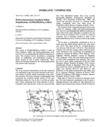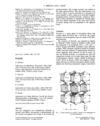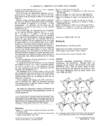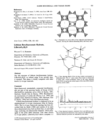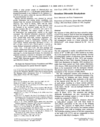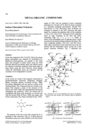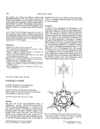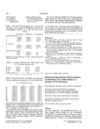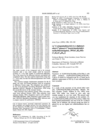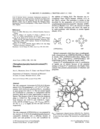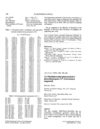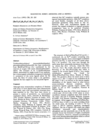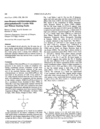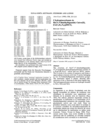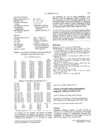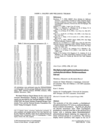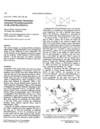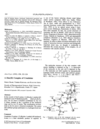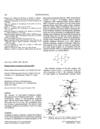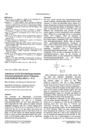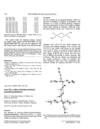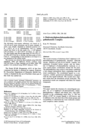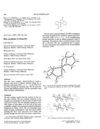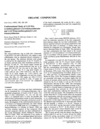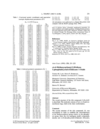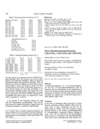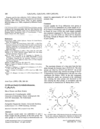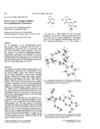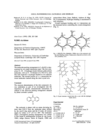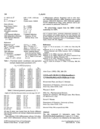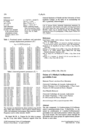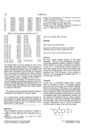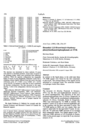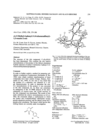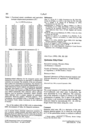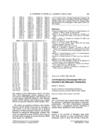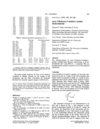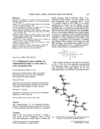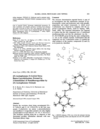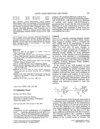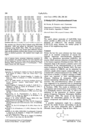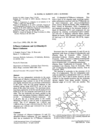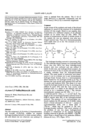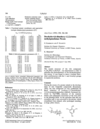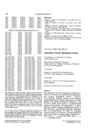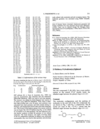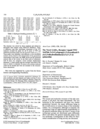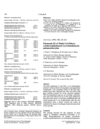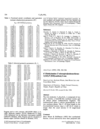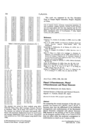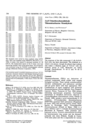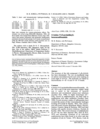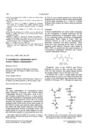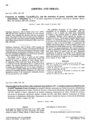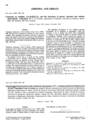issue contents
February 1995 issue

Cover illustration: 2'-carbamate taxol, see Gao & Golik, pages 295--298. The displacement ellipsoids are shown at the 50% probability level.
inorganic compounds
Download citation


Download citation


The structure consists of chains of octahedrally and tetrahedrally arranged O atoms around Sc and S atoms, respectively. These chains are hydrogen bonded by the hydroxylammonium ions and the water molecules.
Download citation


Download citation


FeAl3Si2 is isotypic with PdGa5, but presents a superstructure (space group Pbcn). The structure may be described by the idealized formula FeAl(1)Al(2)2Si2, in which Fe and Al(1) are tenfold and Al(2) and Si are ninefold coordinated.
Download citation


Download citation


KAlAs2O7 is isotypic with RbAlAs2O7. The structure consists of a covalent framework built up from corner-sharing AsO4 tetrahedra and AlO6 octahedra, and containing intersecting tunnels within which the K+ ions are located.
Download citation


Download citation


LiBeAsO4.H2O is isostructural with other LiABO4.H2O Li–A-type molecular sieves. Geometrical parameters, derived from X-ray powder data, are typical for the ordered, alternating BeO4 and AsO4 groups in this phase.
Download citation


Download citation


In SrBr2.6H2O, Sr has tricapped trigonal prismatic coordination geometry involving six bridging and three terminal water molecules, resulting in a linear polymeric cation of general formula [Sr(H2O)6]n2n+ with charges balanced by Br− ions.
metal-organic compounds
Download citation


Download citation


Download citation


Download citation


Download citation


Download citation


Download citation


Download citation


Download citation


Download citation


Download citation


Download citation


Download citation


Download citation


Download citation


Download citation


Download citation


Download citation


Download citation


Download citation


Download citation


Download citation


Download citation


Download citation


Download citation


Download citation


Download citation


Download citation


Download citation


Download citation


Download citation


Download citation


Download citation


Download citation


Download citation


Download citation


Download citation


Download citation


Download citation


Download citation


Download citation


Download citation


Download citation


Download citation


Download citation


Download citation


Download citation


Download citation


Download citation


Download citation


Download citation


Download citation


organic compounds
Download citation


Download citation


Download citation


Download citation


Download citation


Download citation


Download citation


Download citation


Download citation


Download citation


Download citation


Download citation


Download citation


Download citation


Download citation


Download citation


Download citation


Download citation


Download citation


Download citation


Download citation


Download citation


Download citation


Download citation


Download citation


Download citation


Download citation


Download citation


Download citation


Download citation


Download citation


Download citation


Download citation


Download citation


Download citation


Download citation


Download citation


Download citation


Download citation


Download citation


Download citation


Download citation


Download citation


Download citation


Download citation


Download citation


Download citation


Download citation


Download citation


Download citation


Download citation


Download citation


Download citation


Download citation


Download citation


Download citation


Download citation


Download citation


Download citation


Download citation


Download citation


Download citation


Download citation


Download citation


Download citation


Download citation


Download citation


Download citation


Download citation


Download citation


Download citation


Download citation


Download citation


Download citation


Download citation


Download citation


addenda and errata
Free 

Addendum to Acta Cryst. (1993), C49, 205-207.
Free 

Erratum to Acta Cryst. (1993), C49, 1830-1833.


 journal menu
journal menu











